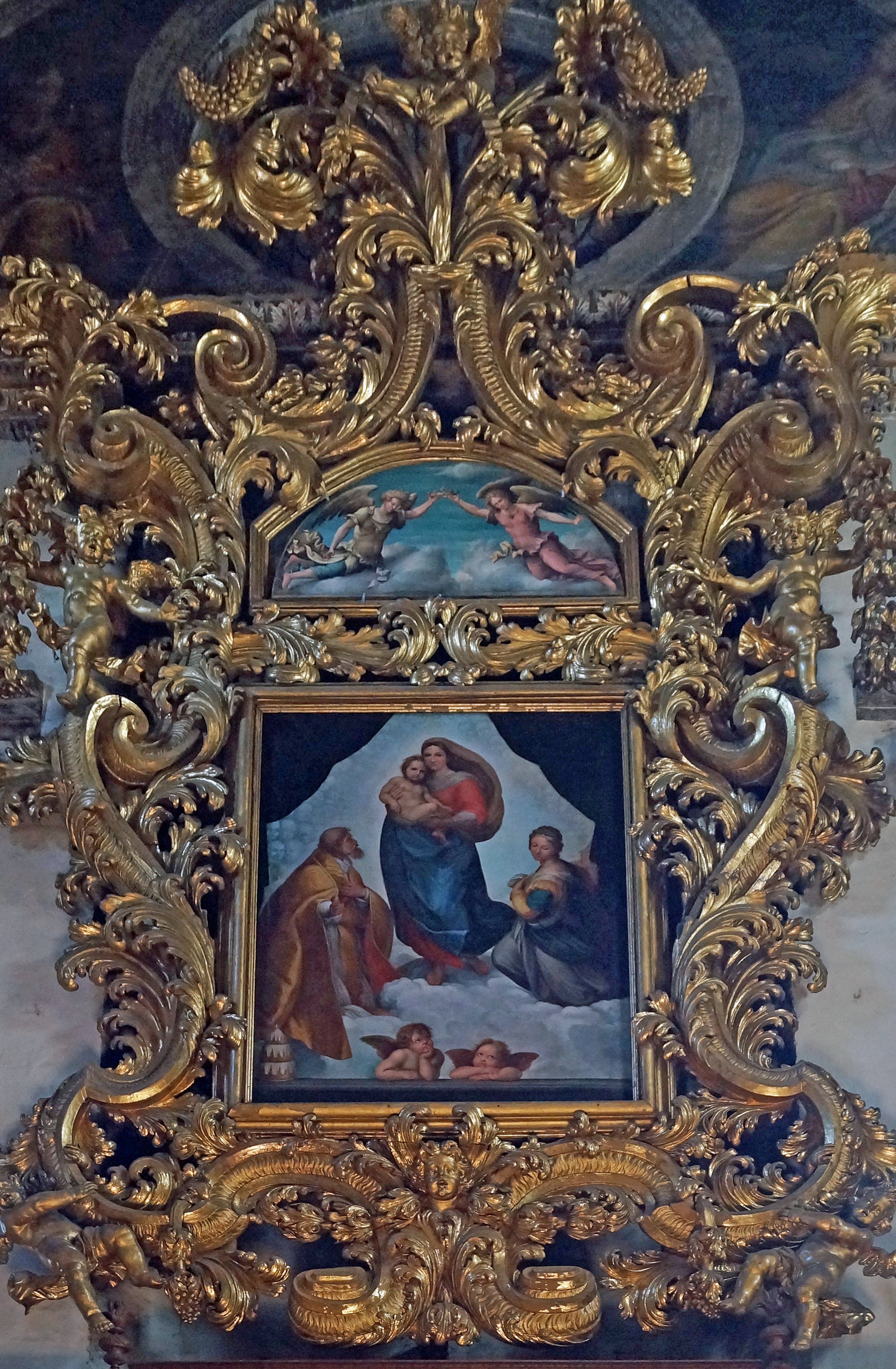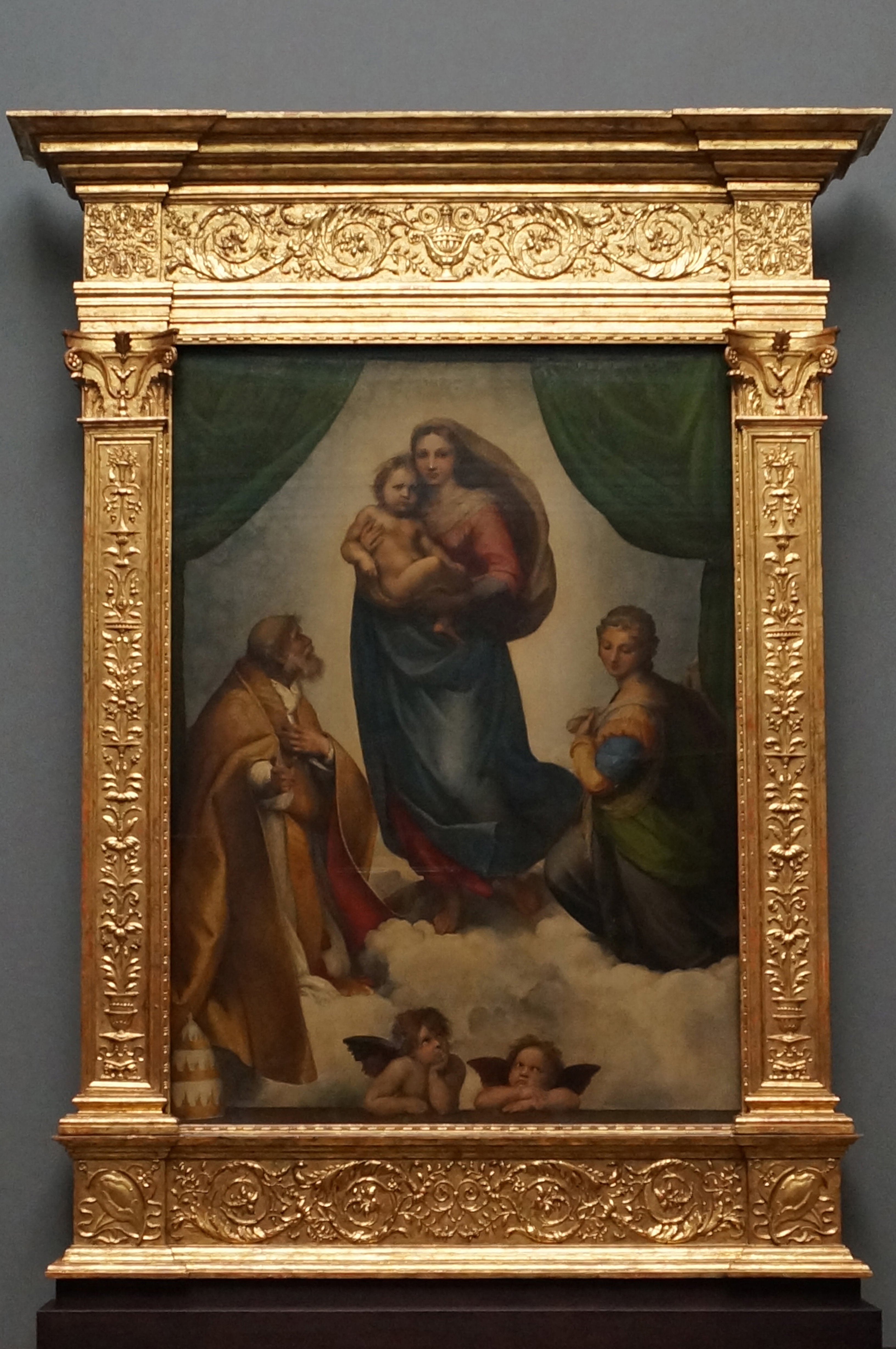San Sisto, Piacenza on:
[Wikipedia]
[Google]
[Amazon]
San Sisto is a 

 The interior has chapels frescoed by Antonio and
The interior has chapels frescoed by Antonio and Comune of Piacenza
church entry.
Renaissance
The Renaissance ( , ) , from , with the same meanings. is a period in European history marking the transition from the Middle Ages to modernity and covering the 15th and 16th centuries, characterized by an effort to revive and surpass ideas ...
style, Roman Catholic
Roman or Romans most often refers to:
*Rome, the capital city of Italy
*Ancient Rome, Roman civilization from 8th century BC to 5th century AD
*Roman people, the people of ancient Rome
*'' Epistle to the Romans'', shortened to ''Romans'', a lette ...
church, located in Piacenza
Piacenza (; egl, label= Piacentino, Piaṡëinsa ; ) is a city and in the Emilia-Romagna region of northern Italy, and the capital of the eponymous province. As of 2022, Piacenza is the ninth largest city in the region by population, with over ...
, Region of Emilia Romagna, Italy
Italy ( it, Italia ), officially the Italian Republic, ) or the Republic of Italy, is a country in Southern Europe. It is located in the middle of the Mediterranean Sea, and its territory largely coincides with the homonymous geographical re ...
.

History
The church and an adjacent convent and hospital were founded in 874 by Queen Angilberga, wife of the Emperor Louis II. She had been exiled some years after his death, but in 882, she was allowed to return to Italy, where she became abbess of theBenedictine
, image = Medalla San Benito.PNG
, caption = Design on the obverse side of the Saint Benedict Medal
, abbreviation = OSB
, formation =
, motto = (English: 'Pray and Work')
, foun ...
convent, presumably this one.
The convent became wealthy due to grants of significant privileges and properties in northern Italy. Over the centuries, several orders of monks and nuns competed for control of the convent until 1425, when it was assigned to the Benedictine order of Monte Cassino
Monte Cassino (today usually spelled Montecassino) is a rocky hill about southeast of Rome, in the Latin Valley, Italy, west of Cassino and at an elevation of . Site of the Roman town of Casinum, it is widely known for its abbey, the first h ...
. In 1499, the convent commissioned the present church building from Alessio Tramello Alessio Tramello (1455–1535) was an Italian Renaissance architect who mostly designed churches and civic works.
He began his activity in Piacenza and his work uses forms of Gothic architecture. Two works from Piacenza stand out in design. The fir ...
. It was consecrated in 1511.
Facade
TheMannerist
Mannerism, which may also be known as Late Renaissance, is a style in European art that emerged in the later years of the Italian High Renaissance around 1520, spreading by about 1530 and lasting until about the end of the 16th century in Italy, ...
facade was not competed until 1591. Asymmetries and odd touches abound. Side doors are smaller than the central one. The entry portal has a broken tympanum holding a central statuary niche within a rounded arch with a central bracket. The ground floor of the facade has half-columns, while the second floor has shorter pilasters topped by smiling gorgon
A Gorgon (Help:IPA/English, /ˈɡɔːrɡən/; plural: Gorgons, Ancient Greek language, Ancient Greek: Γοργών/Γοργώ ''Gorgṓn/Gorgṓ'') is a creature in Greek mythology. Gorgons occur in the earliest examples of Greek literature. W ...
masks that drain rainwater through their mouths. The central rose window
Rose window is often used as a generic term applied to a circular window, but is especially used for those found in Gothic cathedrals and churches. The windows are divided into segments by stone mullions and tracery. The term ''rose window'' w ...
is framed in a square, again with a broken tympanum and two central brackets. The facade has three life-sized statues of San Germano, San Sisto, and St. Benedict
Benedict of Nursia ( la, Benedictus Nursiae; it, Benedetto da Norcia; 2 March AD 480 – 21 March AD 548) was an Christianity in Italy, Italian Christian monk, writer, and theologian who is venerated in the Catholic Church, the Eastern Ortho ...
. San Sisto is the church's namesake, while San Germano and St. Benedict are both associated with Cassino, the location of the first Benedictine monastery. The busts of two female saints, Barbara and Martina, also appear on the façade, above each of the side windows.
The adjacent Renaissance-style convent (1591-1596) is owned by the military and closed to visitors. The cloister has a number of medallions frescoed by Bernardino Zacchetti.
Interior

 The interior has chapels frescoed by Antonio and
The interior has chapels frescoed by Antonio and Vincenzo Campi
Vincenzo Campi (; c.1530/1535–1591) was a 16th-century Italian painter working in Cremona during the Late Renaissance. Campi is best known as one of the first northern Italian artists to work in the Flemish style of realist genre painting.
...
, there is an altarpiece and a in the choir of ''massacre of the innocents'' by Camillo Procaccini
300px, ''Nativity'' by Camillo Procaccini
Camillo Procaccini (3 March 1561 at Parma – 21 August 1629) was an Italian painter. He has been posthumously referred to as the ''Vasari of Lombardy'', for his prolific Mannerist fresco decoration.
Bor ...
and another painting by Jacopo Palma il Giovane in the choir. The cupola at the center of the transept was frescoed by Bernardino Zacchetti.
At the end of the Nave, in the choir of the apse is a copy of the Raphael's ''Sistine Madonna
The ''Sistine Madonna'', also called the ''Madonna di San Sisto'', is an oil painting by the Italian artist Raphael. The painting was commissioned in 1512 by Pope Julius II for the church of San Sisto, Piacenza, and probably executed ''c.'' 151 ...
'' attributed to Pietro Antonio Avanzini
Pietro Antonio Avanzini (1656–1733) was an Italian painter.
Biography
He was born in Piacenza, trained by Marcantonio Franceschini in Bologna, and described as a painter of little originality, often copying his master's designs Among his works ...
. To the great loss of Piacenza, the Benedictines pawned off the original in 1754 to Augustus III, King of Poland
Augustus III ( pl, August III Sas, lt, Augustas III; 17 October 1696 5 October 1763) was King of Poland and Grand Duke of Lithuania from 1733 until 1763, as well as Elector of Saxony in the Holy Roman Empire where he was known as Frederick Augu ...
for the lordly sum of twelve thousand zecchini. The painting is now one of the masterpieces on display at the Gemäldegalerie in Dresden
Dresden (, ; Upper Saxon: ''Dräsdn''; wen, label=Upper Sorbian, Drježdźany) is the capital city of the German state of Saxony and its second most populous city, after Leipzig. It is the 12th most populous city of Germany, the fourth larg ...
;
To the left of the transept is the altar and tomb dedicated to Margaret of Parma
Margaret of Parma (; 5 July 1522 – 18 January 1586) was Governor of the Netherlands from 1559 to 1567 and from 1578 to 1582. She was the illegitimate daughter of the then 22-year-old Holy Roman Emperor Charles V and Johanna Maria van der G ...
, designed by Simone Moschino
Simone Moschino (12 November 1553 - 20 June 1610) was an Italian Renaissance sculptor and architect, born in Orvieto as Simone Simoncelli.
The son of the court sculptor Francesco Mosca and nephew of Simone Mosca, he was trained in the Tuscan ...
. On the facing side is the monumental chapel of St Barbara
Saint Barbara ( grc, Ἁγία Βαρβάρα; cop, Ϯⲁⲅⲓⲁ Ⲃⲁⲣⲃⲁⲣⲁ; ; ), known in the Eastern Orthodox Church as the Great Martyr Barbara, was an early Christian Lebanese and Greek saint and martyr. Accounts place her in ...
(1926), patron saint of artillery men. The nave ceiling is painted with a pattern of a ''cassettoni'' or geometric squares on a barrel ceiling.church entry.
References
{{DEFAULTSORT:Sisto, Piacenza Roman Catholic churches in Piacenza Renaissance architecture in Piacenza 16th-century Roman Catholic church buildings in Italy Roman Catholic churches completed in 1591 Christian monasteries established in the 9th century Mannerist architecture in Italy